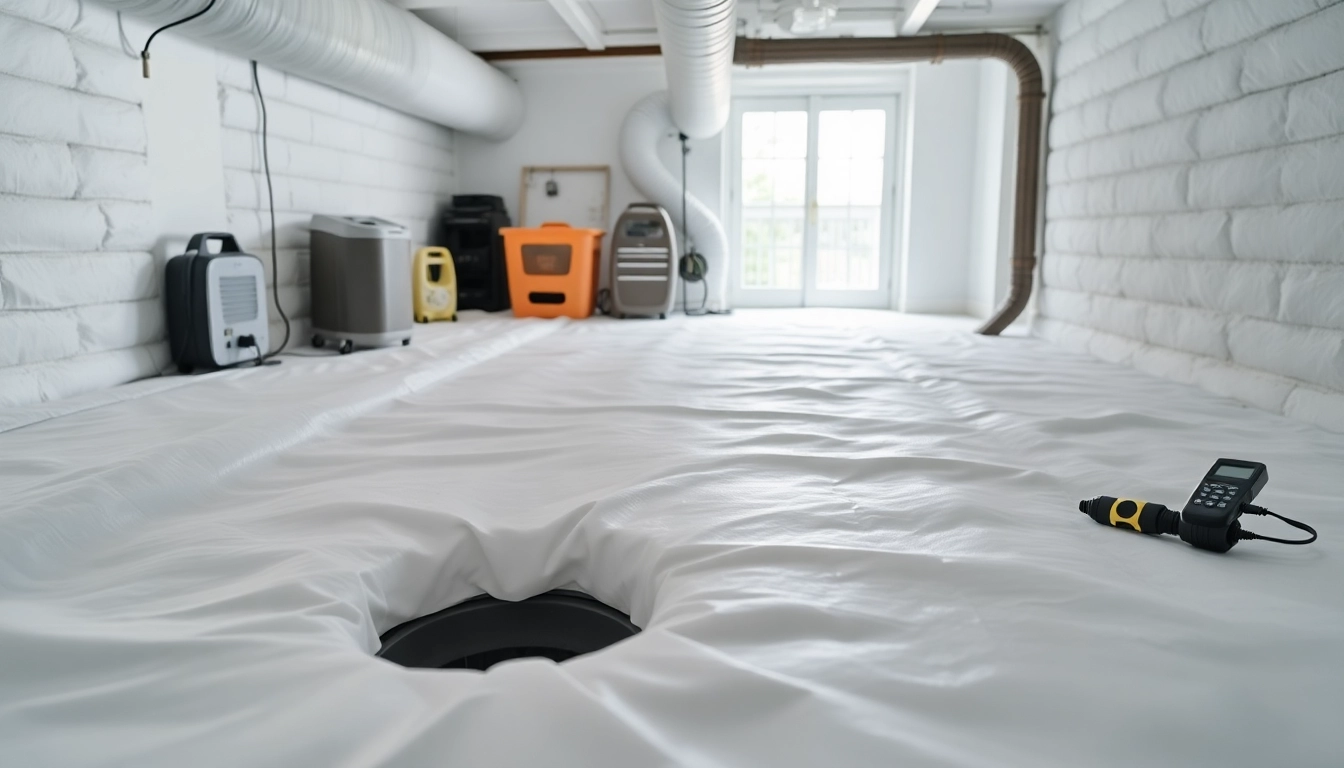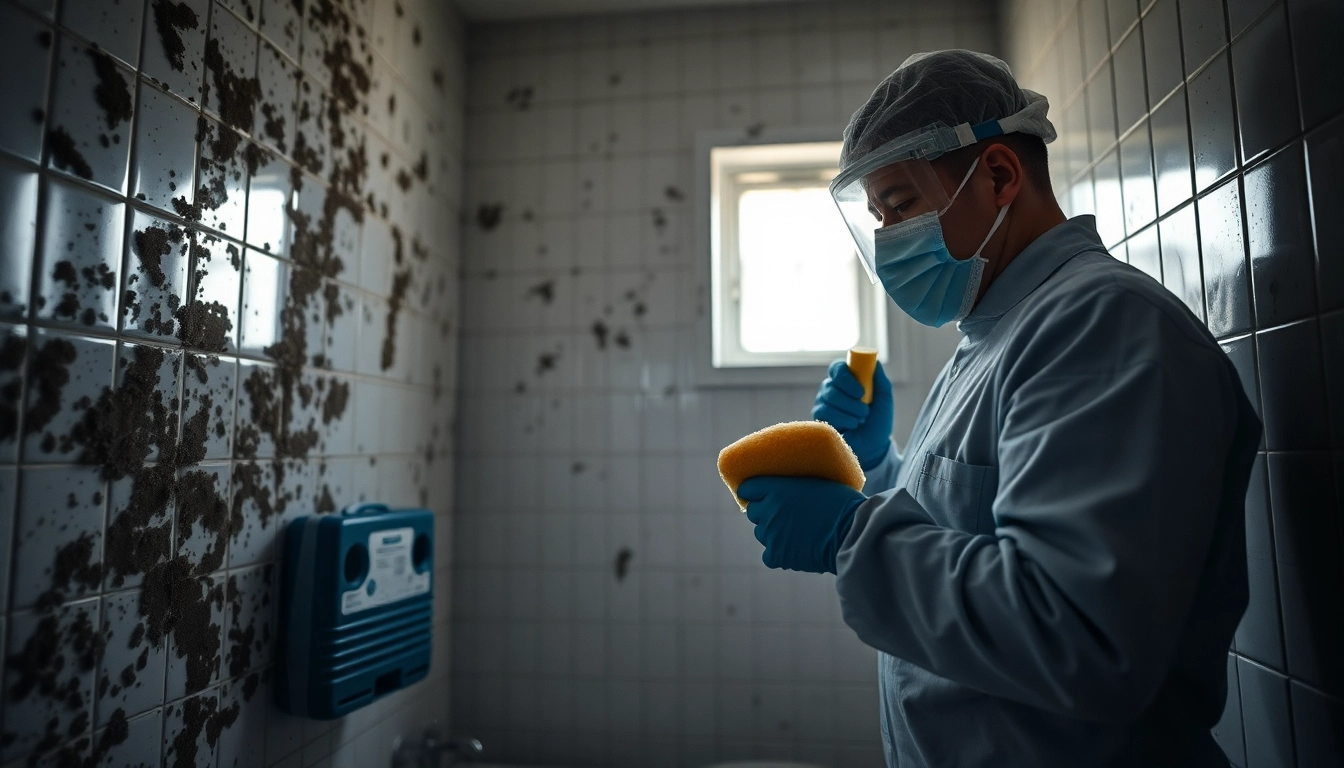Essential Insights on Crawl Space Encapsulation: Benefits and Implementation
Understanding Crawl Space Encapsulation
What is Crawl Space Encapsulation?
Crawl space encapsulation is a method used to seal and protect the crawl space of a home from moisture, pests, and other environmental factors. This process involves covering the ground with a vapor barrier, sealing vents, and insulating walls to create a controlled environment. By effectively creating a barrier, homeowners can prevent the intrusion of water and humidity while also enhancing energy efficiency.
Importance of Crawl Space Encapsulation for Homes
Encapsulating a crawl space serves multiple critical functions that contribute to the overall health and integrity of a home. Moisture-related issues are common in homes with crawl spaces, leading to structural damage, mold growth, and a host of health concerns. By investing in crawl space encapsulation, homeowners can mitigate detrimental effects and prolong the lifespan of their property.
Components of Effective Crawl Space Encapsulation
An effective encapsulation system comprises several key elements, including:
- Vapor Barriers: Thick plastic sheets (typically 6 mils or thicker) are laid over the ground to block moisture from the soil.
- Sealing Vents: All vents are sealed to prevent outside air from entering, which can carry excessive moisture and contaminants.
- Insulation: Walls are insulated to maintain temperature stability and reduce energy costs.
- Dehumidifiers: In humid climates, a dehumidifier may be employed to regulate moisture levels effectively.
Benefits of Crawl Space Encapsulation
Improved Air Quality and Health Benefits
One of the most significant benefits of crawl space encapsulation is improved indoor air quality. Since crawl spaces often harbor mold spores, allergens, and pollutants, sealing these off from the home reduces the chances of these particles entering living spaces. Consequently, this can lead to fewer allergy symptoms and respiratory problems, creating a healthier environment for residents.
Energy Efficiency and Cost Savings
Encapsulating a crawl space can lead to significant energy savings. By insulating the crawl space and sealing out outside air, homes become more energy-efficient. This can result in lower heating and cooling costs, ultimately saving homeowners money in utility bills over time. In fact, studies show that energy costs can be reduced by as much as 20% following proper encapsulation.
Preventing Moisture and Mold Problems
Crawl spaces are susceptible to moisture buildup, which can lead to mold growth, wood rot, and structural damage. A well-designed encapsulation system effectively prevents moisture from entering the space, significantly reducing the risk of mold and associated problems. Homeowners can enjoy peace of mind, knowing that their investment is protected from deterioration due to moisture issues.
Steps to Implement Crawl Space Encapsulation
Assessment of Existing Crawl Space Conditions
The first step in the encapsulation process is to thoroughly assess the existing conditions of the crawl space. Homeowners should look for signs of moisture intrusion, mold growth, existing insulation issues, and the overall structural integrity of the space. Additionally, identifying drainage problems is crucial, as proper drainage should be established before encapsulation begins.
Choosing the Right Materials for Encapsulation
Selecting high-quality materials is essential for the success of a crawl space encapsulation project. Homeowners should opt for a durable vapor barrier, quality insulation, and reliable sealants to ensure a tight and effective barrier against moisture. Consulting with a professional can provide valuable guidance in selecting the most effective materials tailored to the specific crawl space conditions.
DIY vs. Professional Installation Considerations
Crawl space encapsulation can be tackled as a DIY project, but homeowners should weigh the pros and cons carefully. While DIY projects can save money, they can also lead to mistakes if proper techniques are not followed. Hiring a professional ensures that the encapsulation is done effectively and meets local building codes, ultimately providing peace of mind and potentially saving money in the long run.
Common Challenges in Crawl Space Encapsulation
Dealing with Moisture and Drainage Issues
A primary challenge in the encapsulation process is addressing existing moisture problems and inadequate drainage. It is important to assess the surrounding landscape and ensure there is proper grading away from the foundation to prevent water accumulation. Installing a sump pump or French drain system may also be necessary to divert water effectively and keep the crawl space dry.
Addressing Pests and Contaminants
Another challenge that homeowners might face during encapsulation is dealing with pests, such as rodents or insects, that may inhabit the crawl space. Before encapsulating, it is essential to address infestations professionally. Additionally, sealing all entry points helps prevent future infestations while maintaining the integrity of the encapsulated environment.
Maintaining the Encapsulated Space Over Time
Once encapsulation is complete, ongoing maintenance is crucial to ensure the effectiveness of the system. Homeowners should periodically inspect the space for any signs of moisture leaks, pests, or mold growth. Consider installing a dehumidifier for humid climates and ensure that ventilation remains properly sealed to maintain a controlled environment.
Performance Metrics for Crawl Space Encapsulation
Assessing Effectiveness After Installation
To gauge the success of the encapsulation efforts, homeowners can monitor humidity levels and inspect the crawl space for visual signs of moisture or mold. Using a hygrometer can help track humidity levels, ensuring they remain stable within an acceptable range below 60% to prevent mold growth and protect the home’s structure.
Recommended Maintenance Practices
Regular maintenance practices are essential for the longevity of an encapsulated crawl space. Homeowners should establish a routine to inspect the space for any emerging problems, including checking the vapor barrier for tears, assessing insulation for damage, and ensuring that drainage systems are functioning. Regularly cleaning gutters and ensuring proper drainage away from the foundation also contributes to long-term success.
Long-term Cost-Benefit Analysis
Conducting a long-term cost-benefit analysis can be invaluable for homeowners considering crawl space encapsulation. While there may be upfront costs associated with encapsulation, the savings accrued over the years in reduced energy bills, prevention of structural damage, and improved health can far outweigh the initial investment. Additionally, the potential increase in home value can be a substantial advantage, making encapsulation a smart long-term home maintenance strategy.














Post Comment